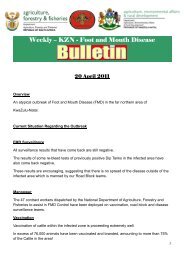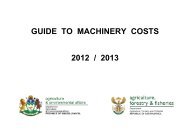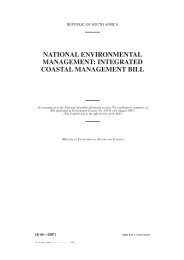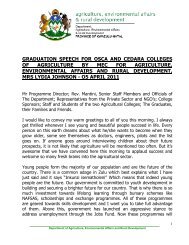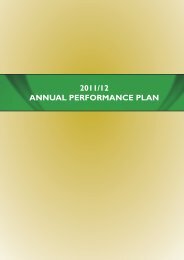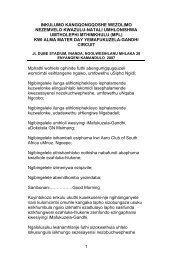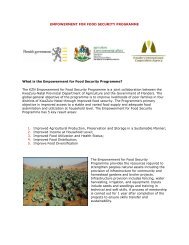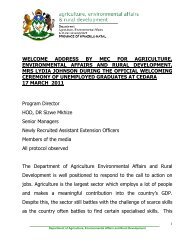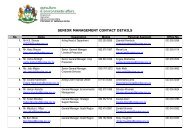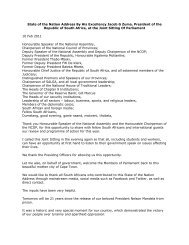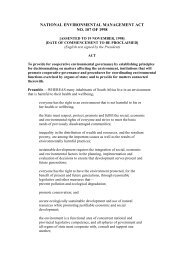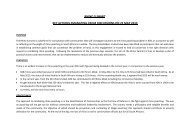Socio-Economic Report - Department of Agriculture and ...
Socio-Economic Report - Department of Agriculture and ...
Socio-Economic Report - Department of Agriculture and ...
Create successful ePaper yourself
Turn your PDF publications into a flip-book with our unique Google optimized e-Paper software.
UDM ENVIRONMENTAL MANAGEMENT FRAMEWORK<br />
House or brick structure on a separate st<strong>and</strong> or yard<br />
Flat in block <strong>of</strong> flats<br />
Town/cluster/semi-detached house (simplex; duplex; triplex)<br />
House/flat/room in back yard<br />
Traditional dwelling/hut/structure made <strong>of</strong> traditional materials<br />
Room/flatlet not in back yard but on shared property<br />
Caravan or tent<br />
Private ship/boat<br />
Informal Housing is classified as (Statistics South Africa, 2001):<br />
Informal dwelling/shack in back yard<br />
Informal dwelling/shack not in back yard<br />
Table 9: Percentage distribution <strong>of</strong> households by type <strong>of</strong> main dwelling (Statistics South Africa, 2007)<br />
Type <strong>of</strong> dwelling Census 2001<br />
Community<br />
Survey 2007<br />
House on separate st<strong>and</strong> 27.3 49.4<br />
Traditional dwelling 50.6 41<br />
Flat in block <strong>of</strong> flats 13.1 2.4<br />
Townhouse/cluster 0.7 0.7<br />
Room in back yard 3.2 1.3<br />
Informal dwelling<br />
in back yard 1.4 1<br />
not in back yard 2.4 1.7<br />
Room on shared property 0.7 0.9<br />
Caravan / tent 0.5 0.1<br />
Private ship/boat - 0.1<br />
Worker's hostel - 1.1<br />
Other - 0.2<br />
Total 100 100<br />
There have been changes in formal <strong>and</strong> traditional dwelling types in UDM between<br />
2001 <strong>and</strong> 2007. There has been an 81 percent rise in the number <strong>of</strong> houses on a<br />
separate st<strong>and</strong>. Half <strong>of</strong> this change comes from an 80 percent decline in persons<br />
living in flats. The other part <strong>of</strong> this change comes from a decline in traditional<br />
dwelling by almost 10 percent. Half the UDM population live in some form <strong>of</strong> informal<br />
dwelling.<br />
WATER SUPPLY<br />
Access to water is not only an indicator into the st<strong>and</strong>ard <strong>of</strong> living but also the level <strong>of</strong><br />
health. Inadequate access to water contributes to disease <strong>and</strong> sickness thus<br />
increasing the populations vulnerability to disease <strong>and</strong> reducing productivity.<br />
<strong>Socio</strong>-<strong>Economic</strong> Assessment Page 34



